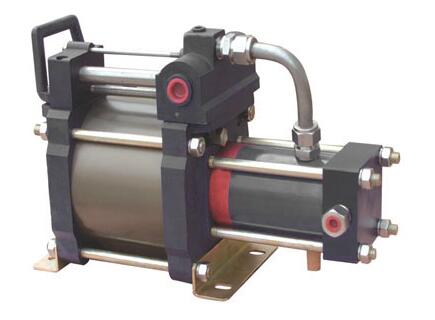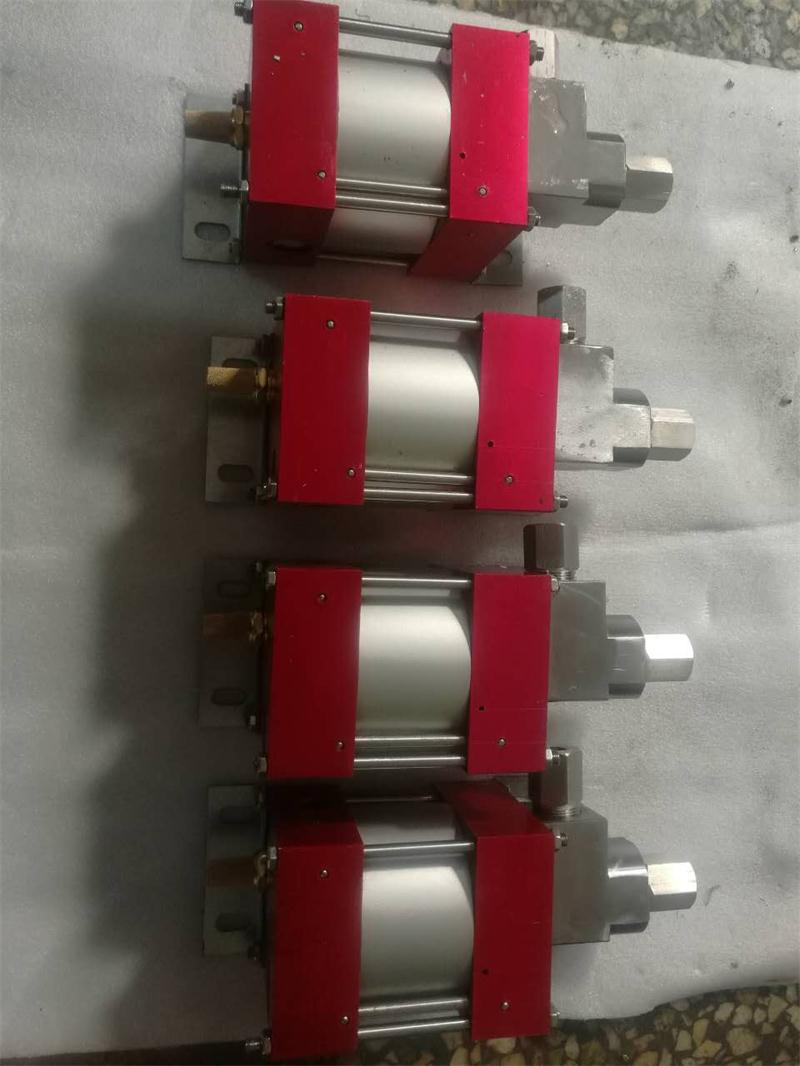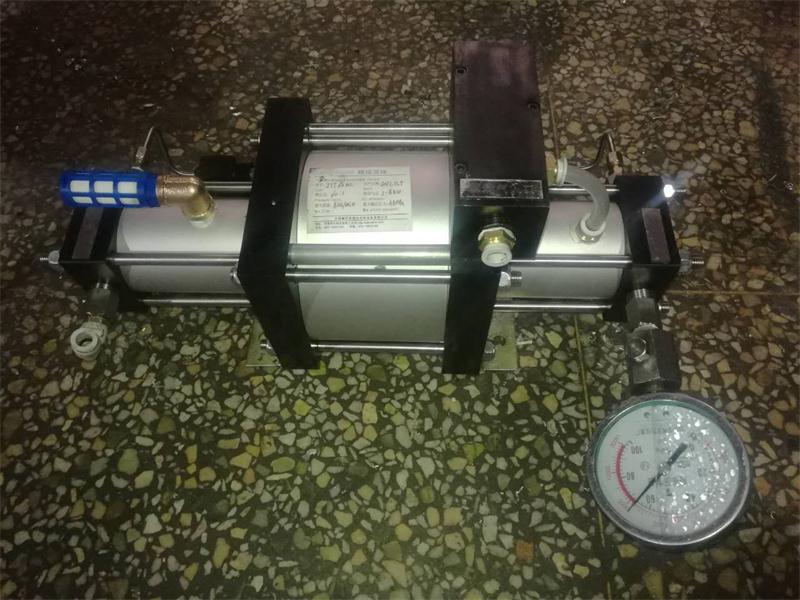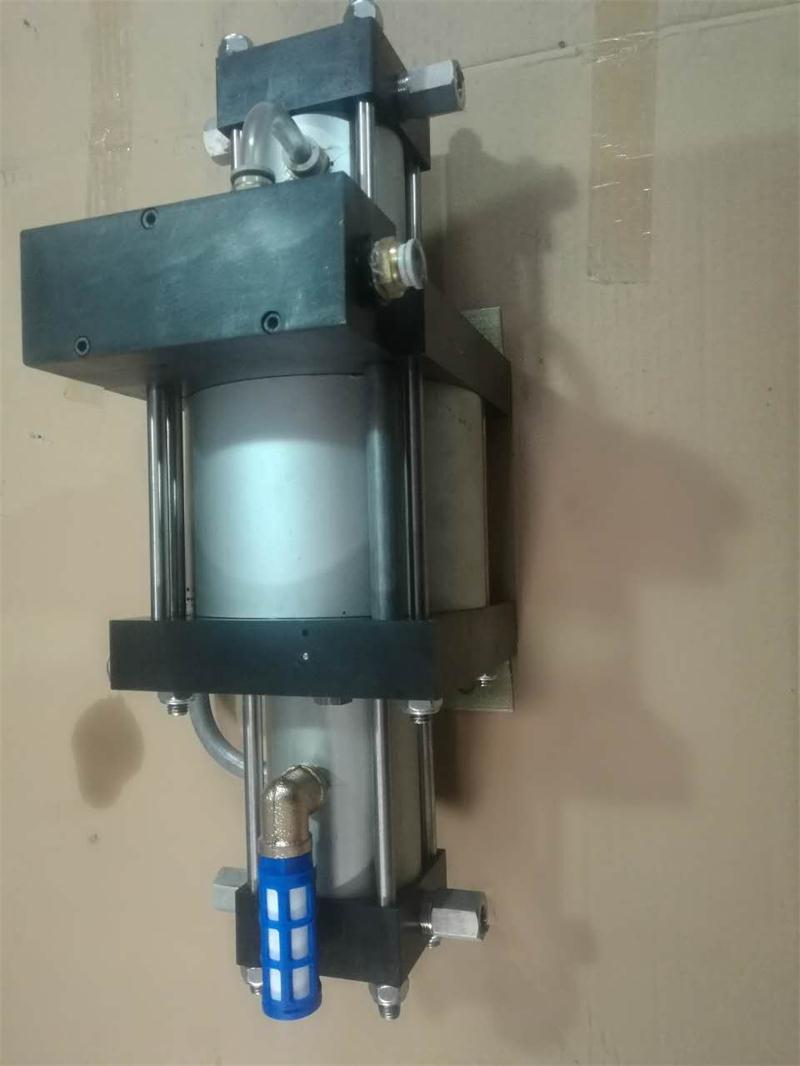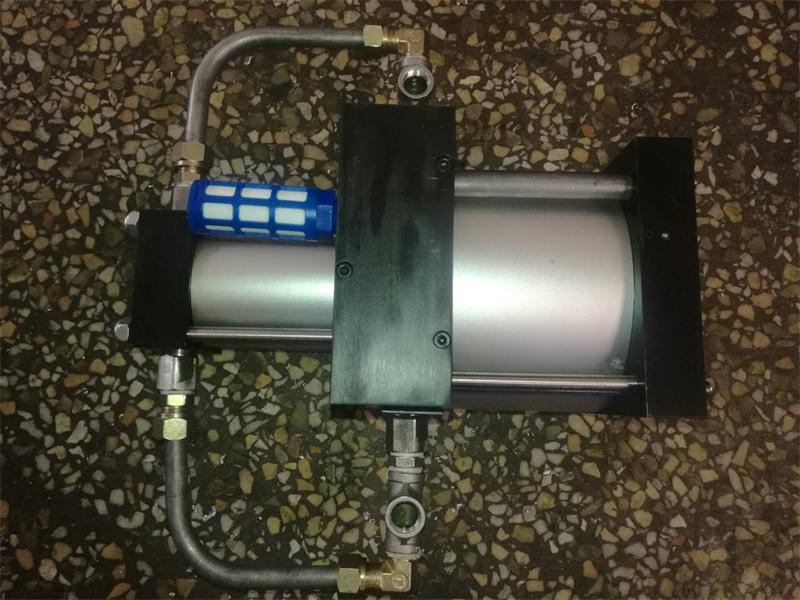濟南精拓流體設備有限公司
電話(huà):0531-69951198
郵箱:jingtuolt@163.com
傳真:0531-69951198
地址:濟南市歷城區祝甸北路2號院
網(wǎng)址:http://www.liqun518.com
1、工作原理上的區別:
1. Differences in working principles:
(1)氣體增壓泵工作原理:
(1) Working principle of gas booster pump:
氣體增壓泵是以壓縮空氣為動(dòng)力源的活塞式增壓泵,進(jìn)氣時(shí),增壓氣控閥的閥芯往復切換進(jìn)行工作,控制增壓閥活塞以極快的速度作往復動(dòng)作,隨著(zhù)輸出壓力增大一直到恒定,活塞往復速度減慢直到停止。輸出壓力到達恒定后,能量消耗到達低,各個(gè)部件停止工作。當保壓回路壓力下降時(shí),增壓閥會(huì )自動(dòng)啟動(dòng),補充泄漏的壓力,無(wú)論什么原因導致的壓力下降,增壓發(fā)始終會(huì )保持回路壓力恒定。
A gas booster pump is a piston type booster pump that uses compressed air as the power source. When entering the air, the valve core of the booster gas control valve switches back and forth to work, controlling the piston of the booster valve to reciprocate at an extremely fast speed. As the output pressure increases and remains constant, the reciprocating speed of the piston slows down until it stops. After the output pressure reaches a constant level, energy consumption reaches a low level and all components stop working. When the pressure in the pressure maintaining circuit drops, the booster valve will automatically start to replenish the leaked pressure. Regardless of the reason for the pressure drop, the booster valve will always maintain a constant circuit pressure.
(2)氣液增壓泵工作原理:
(2) Working principle of gas-liquid booster pump:
氣液增壓泵是一種往復式柱塞泵,以氣體為動(dòng)力源,增壓比決定泵的大輸出壓力,它是利用大面積活塞端的低壓氣體驅動(dòng)面轉換為小面積活塞端的高壓液體。
A gas-liquid booster pump is a reciprocating piston pump that uses gas as the power source, and the boost ratio determines the large output pressure of the pump. It uses the low-pressure gas driving surface at the large-area piston end to convert it into high-pressure liquid at the small-area piston end.
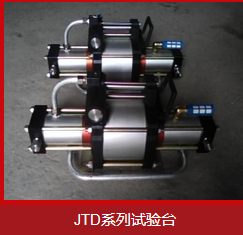
當驅動(dòng)活塞向后運行時(shí),增壓泵將液體吸入泵內,入口處的單向閥此時(shí)打開(kāi),出口單向閥關(guān)閉。活塞向前運行時(shí),在液體一側會(huì )形成一定壓力,此時(shí)入口處單向閥關(guān)閉,出口處單向閥打開(kāi),高壓液體就從出口處流出。
When the driving piston runs backwards, the booster pump sucks the liquid into the pump, and the one-way valve at the inlet opens and the one-way valve at the outlet closes. When the piston moves forward, a certain pressure will be formed on the liquid side. At this time, the inlet check valve will close, and the outlet check valve will open. High pressure liquid will flow out from the outlet.
氣液增壓泵能夠實(shí)現自動(dòng)循環(huán),當出口壓力升高時(shí),泵就會(huì )減速運行,并對活塞產(chǎn)生一定的阻力;當力平衡時(shí),泵會(huì )自動(dòng)停止運行,此時(shí)高壓活塞端壓力與液體壓力達到平衡;活塞保持靜止,此時(shí)能量消耗低,無(wú)油溫之困擾,各部件停止工作。當出口壓力降低或氣體驅動(dòng)壓力增加時(shí),液泵會(huì )自動(dòng)啟動(dòng)運行。
The gas-liquid booster pump can achieve automatic circulation. When the outlet pressure increases, the pump will slow down and create a certain resistance to the piston; When the force is balanced, the pump will automatically stop running, and at this time, the high-pressure piston end pressure and liquid pressure reach equilibrium; The piston remains stationary, with low energy consumption and no oil temperature issues, and all components stop working. When the outlet pressure decreases or the gas drive pressure increases, the liquid pump will automatically start running.
2、種類(lèi)上的區別:
2. Differences in types:
雖然兩者都是氣動(dòng)增壓泵,但前者是活塞式泵,增壓介質(zhì)是氣體,如壓縮空氣、氮氣、二氧化碳、水蒸氣、天然氣等,后者是柱塞式泵,增壓介質(zhì)是液體,如水、煤油、液壓油、石油、乳液等。
Although both are pneumatic booster pumps, the former is a piston pump, and the booster medium is gas, such as compressed air, nitrogen, carbon dioxide, water vapor, natural gas, etc. The latter is a plunger pump, and the booster medium is liquid, such as water, kerosene, hydraulic oil, petroleum, lotion, etc.
氣體增壓泵,氣液增壓泵驅動(dòng)組件的工作原理是相同的,但是壓力不一樣,因為氣體是可壓縮的,液體的壓縮性可以忽略。
The working principle of the driving components of gas booster pump and gas-liquid booster pump is the same, but the pressure is different because gas is compressible and the compressibility of liquid can be ignored.
